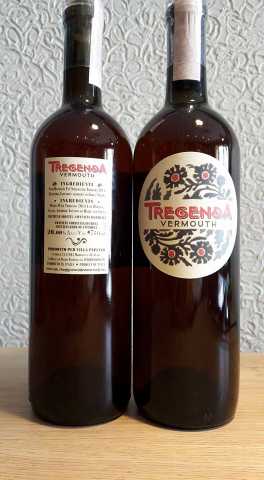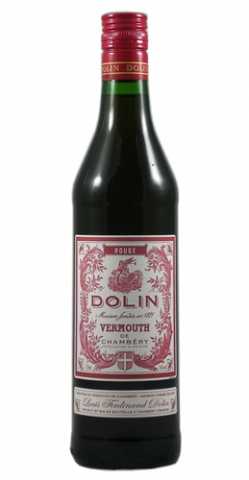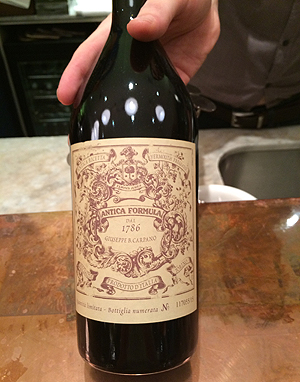EDIT Updated with pics of my entire Vermouth collection after a massive acquisition at the SAQ in Montreal this past week. New TN added at the end for Priorat Natur Vermut Blanco from Spain.
Berserkers,
After recently trying and posting on a rare Barolo Chinato, I decided to take the next logical step and see if I could hunt down some high-end versions of the only wine I am aware of with similar flavors: Vermouth. Vermouth is a classic fortified aromatised wine infused with herbs, spices and botanicals (which is a nice term for plant barks, seeds and roots i.e. the scraps). That sweet spicy herbal flavor is also found in Amaro and Chinatto soda. While there are endless recipes for it, the main components are usually bitter orange peel, vanilla, mint, coriander, baking spices (cinnamon, cloves, nutmeg) and quinine and/or wormwood aka absinthe which give the mixture that distinctive mentholated medicinal taste and aroma to any product that uses it and turns plain club soda into tonic water.
It’s far too generous to call Vermouth a wine. It’s actually a wine cocktail the same way that Sangria is. The only difference is its use of spices and botanicals instead of fruit to add the additional flavor. The other problem with vermouth is that 99% of it is crap. Most every Vermouth you’ve probably ever had in your life has a cheap wine base, loads of sugar, loads of caramelized sugar on top of it to turn it from a white wine into a “red” wine, and is fortified with cheap alcohol as well. Its popularity in cocktails seems to have only added further incentive to its cheap mass production. For these reasons, it is the only wine category I have never touched at all until just recently.
My internet research shows that just as craft whiskey and craft beer have started a revolution that is turning the masses away from cheap mass-manufactured versions, so is there a craft Vermouth movement. Furthermore, it has a highly respected drinking culture associated with it in Europe, as opposed to just being treated as a cheap cocktail addition like it is here in North America. Craft Vermouth producers can be found in Spain, Italy, France, the United States and Canada. I recently had the good fortune to sample some of these and I’ve come to share my thoughts:
NORDESIA VERMU BLANCO:
OVERALL: Least sweet, most aromatic of all Vermouths tried; soft texture; Albariño grapes don’t stand out very much.
From Spain. This Vermouth has a light caramel brown complexion. The aromas are immediately evident. It’s got a very soft texture in the mouth that reminds me of icewine. It’s not very sweet and so it’s quite balanced between the botanicals and the sweetness. The Albariño grapes don’t lend much to the wine, however. There is no tell-tale salinity or crispness or acidity. In fact, the wine seems to be going out of its way to dull the terroir and characteristics of the Albariño despite the fact that it being the base wine is one of its main selling points. Very smooth, a touch complex, highly aromatic but could use a touch more acidity.
DILLON’S SMALL BATCH DISTILLERS SWEET VERMOUTH
Overall: Impressively balanced Vermouth that uses all local ingredients including some of which Dillon grows themselves.
From Ontario, Canada. Burnished reddish brown in color. Strong wormwood and vanilla aromas and flavors, but there’s also a surprising amount of fruitiness to it as well. Sweet but not overly so, and a fair amount of that sweetness seems to be from fruit, not from the addition of raw sugar. A turn of the bottle to the back and side labels indicate the wine uses late harvested Viognier as well as grape brandy from the Niagara, Ontario region. That explains that. This is extremely well-balanced Vermouth. It’s not as powerful overall as the others, however. Still, this is an achievement for a Canadian wine.
![20170520_150501_HDR[1].jpg](/uploads/db3686/original/3X/4/1/41960fb475c24e92e92e3f8a5622bd3444b39dd1.jpeg)
LUSTAU VERMUT DE JEREZ
Overall: Two high quality Sherry bases and a small but decent choice of aromatics yield a greatly integrated and surprisingly soft and contemplative Vermouth. No added sugar or alcohol a plus, but also could stand to be a touch more aromatic.
From Jerez, Spain. Per their website, Lustau forgoes the usual method of macerating the brandy with the botanical ingredients and then using that to fortify the wine base and added sugar. They start with 10 year old solera Amontillado and 10 year old Pedro Ximenez sherries which have already been fortified and they macerate those directly. These are then blended together for the final product. Without the need for further fortification, the cream Sherry characteristics come shining through. The aromas are a nice blend of Amaro spices and Amontillado nuttiness with a touch of burnt toffee caramel.
In the mouth, a smooth texture allows sweet nut,caramel, toffee and fruity raisin flavors to shine for a second before the bitter aromatics come through… though nowhere near as strong as I expected they would. This Vermouth is far more natural due to its composition and recipe which I do appreciate already being a Sherry lover… but the tradeoff of going all natural without added sugar or alcohol seems to be are somewhat fighting to make themselves known against the already impressive Amontillado and PX characteristics. To be fair, this makes perfect sense. Lustau steeps the botanicals in the 15% wines which have less pure alcohol and therefore less extraction power than a brandy would.
That said, this is still an impressive Vermouth that is delicate, contemplative even, well-balanced and a whole that is far greater than the sum of its parts. It does not taste like a plain Cream Sherry with added botanical flavoring on top of it. It is extremely well-integrated and the dried fruit flavor is very different from the ripe fruit flavor of the other Vermouths tried so far.
![20170520_185825_HDR[1].jpg](/uploads/db3686/original/3X/e/2/e2d4a49111b5e920ffe5f675204be119e6485322.jpeg)
VILLA PAPILLANO TREGENDA VERMOUTH
Overall: Intense super cherry fruity Vermouth with high sweetness, acidity, fruit, botanicals and alcohol. Very fresh botanicals. Extremely high quality, but may come off more as a dessert wine to some. This is not your father’s or even your grandfather’s Vermouth.
From Italy. I came across this Vermouth purely by luck and I’m very glad I did. I had dinner last night at Montecito and they had just received a shipment of this. My eye was immediately drawn to the bottle because it used a Vino-lok stopper and not a cheap T-cork stopper. This producer clearly wants you to know you aren’t about to drink the same old cheap Cinzano or Martini Vermouth. The back label proudly states all ingredients and lets you know that they use late harvested Albana grapes from Italy (not to be confused with Albariño grapes from Spain like the Nordesia above) so you know this is going to be sweet.
Aromas of sour cherry and spices on the nose, it’s almost Burgundy like the fruit aroma is strong. On the palate, super sweet and intense sour cherry flavors immediately attack and then you are hit with the very fresh botanical taste which is super intense and then finishes short as the sweet cherry flavor takes over and finishes things out. Far, far more intense cherry fruit than even the Barolo Chinato I had which had nowhere near as intense the cherry flavors as is found here, this despite being based on a native white grape from Italy. Despite the 20% ABV being the highest of all the Vermouths I’ve had, this also paradoxically has the lightest body of them all as well.
So here’s the interesting thing about this particular Vermouth. Based on sugar being clearly indicated as the second ingredient and the fact that its color is dark reddish brown in the glass despite Albana being a white grape, it is clear that Papillano made this Vermouth in the classic style: macerate your brandy, add to wine base and sugar and you have Vermouth. However, they have turned this all on its head by using top-notch ingredients instead of cheap ones and created a Vermouth they are obviously very proud of and rightfully so.
The only possible criticism that you could give is that it’s extremely sweet, certainly the sweetest of all the Vermouths I tried by a long shot. However, it also has strong acidity and botanicals to counter-balance this. I would approach this as more of a dessert wine than anything else and wouldn’t dream of wasting it in a cocktail. Very classy high-end stuff indeed.



